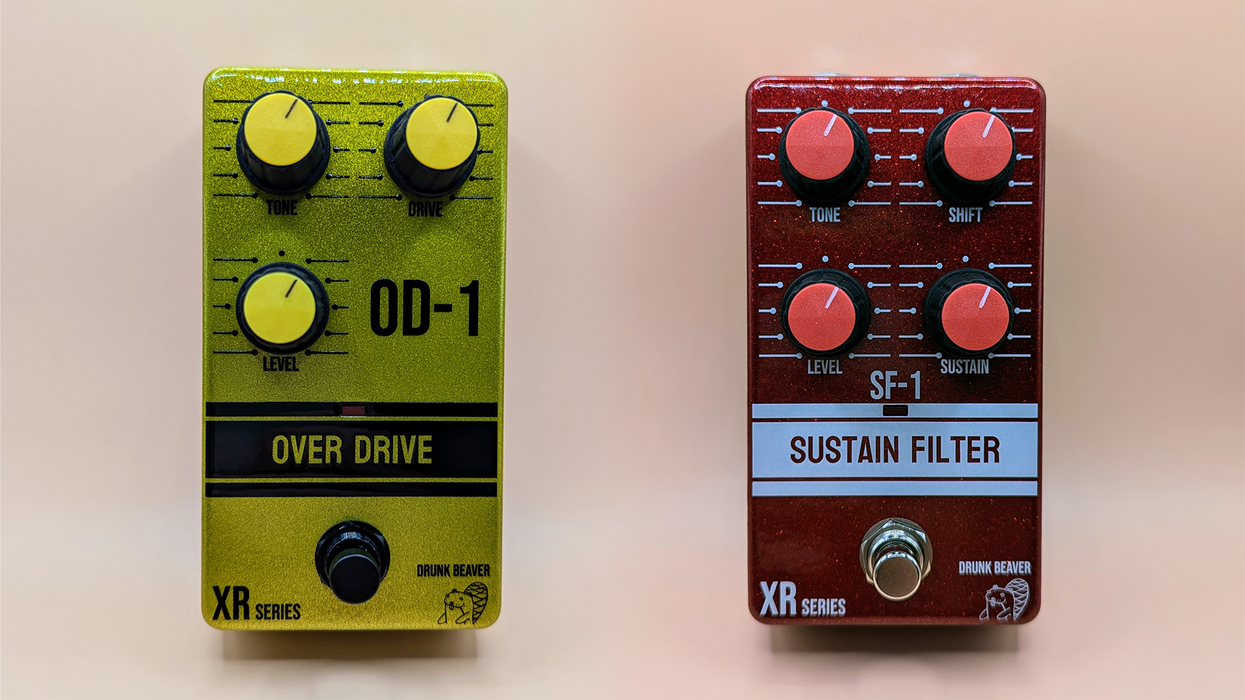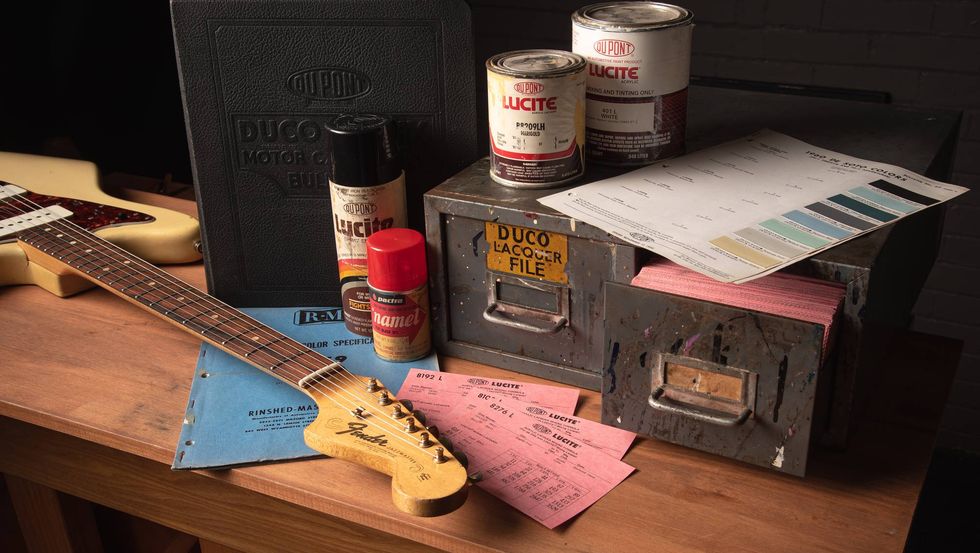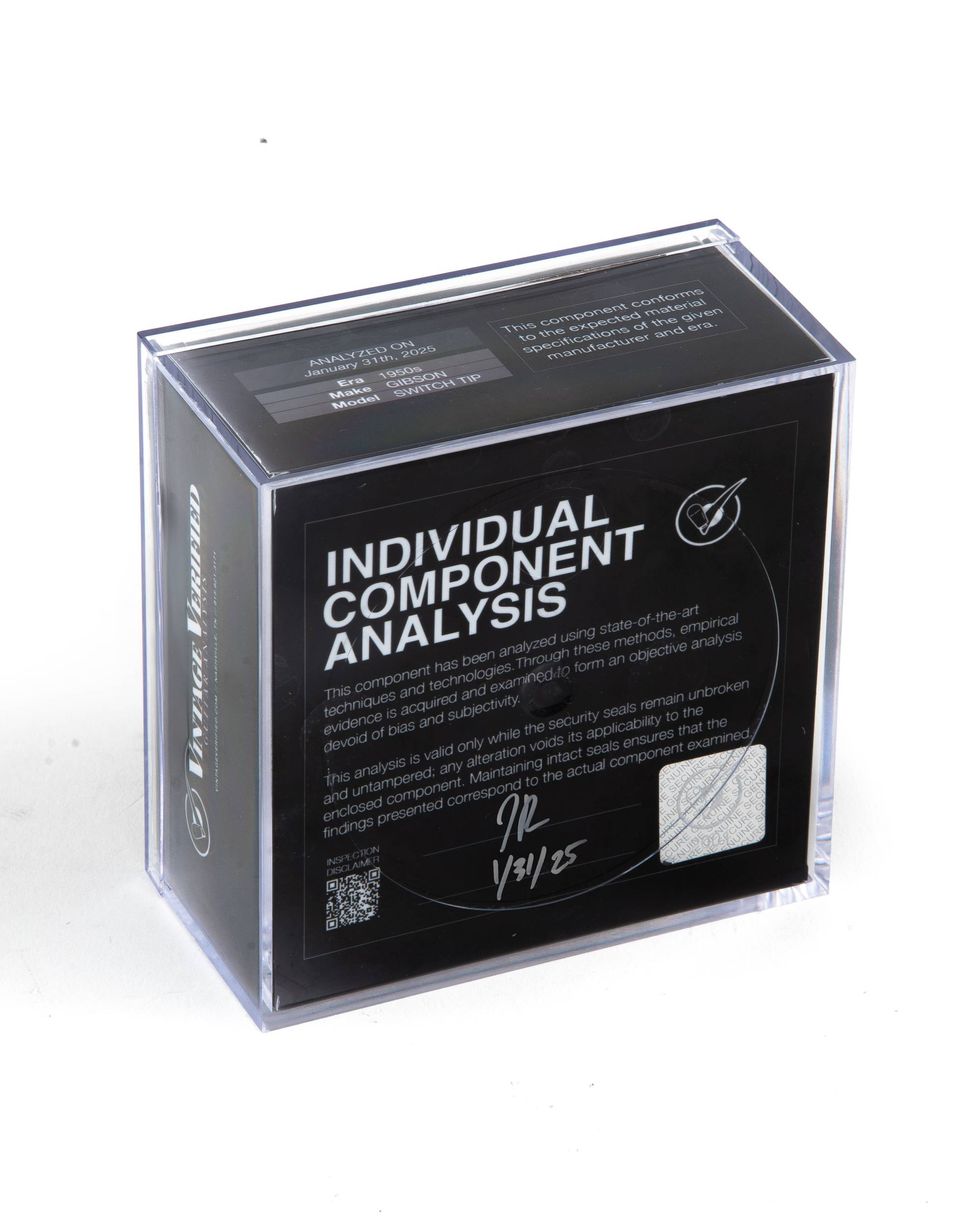Summoning new voices from proven fuzz circuits isn’t easy. Extracting extra utility from them can be trickier still. In the form of the White Atom, London-based Magnetic Effects delivers a hybrid silicon/germanium fuzz that manages both tricks. At core it’s a thrilling and howlingly vintage sounding fuzz. But it’salsocapable of tones on the mellower and more psychotic sides of the fuzz spectrum that few strictly vintage-style units deliver.
Laws of Physical Attraction
In my experience with Magnetic Effects (the Electrochop tremolo is a fixture on my board), there is a thoroughness in design and execution that makes their pedals useful beyond obvious applications. In the case of my Electrochop, I found the volume control so effective that it has become my primary source of clean signal boost. On the White Atom, there’s a highly interactive control set with impressive range that translates to an ultra-wide tone-color spectrum.
On the surface, the White Atom’s control set is neither complex nor terribly unusual. There are knobs for volume, tone, gain, and texture. The latter is essentially a bias control that starves the circuit of voltage. The White Atom’s bias control works somewhat differently than most, though. While bias controls often create a disparity between the voltages in individual transistors, the White Atom’s bias control shifts the operating point of both transistors simultaneously. The sonic dividend seems to be slightly subtler and more demented biased tones.
expressive ’60s units.
The circuit board is clean and ordered, if crowded. The transistor array sits clumped together like a little forest towering over the plains of all-in-a-row diodes and capacitors. But rather than use an all-transistor gain-generating section like you’d see in a vintage fuzz, the White Atom uses an OpAmp to boost the signal from two transistors. There’s plenty of room for a 9V battery (it will run via 9V DC power as well), and the sturdy enclosure-mounted jacks and pots make the circuit board more isolated from the blows that come with life on the road. In this respect at least, the move to a more compact and tightly populated board looks like very good sense.
Classics Read Colorfully
The White Atom is a very forgiving fuzz. At nearly all settings apart from the most extreme, it’s very focused and balanced across the frequency spectrum, with scads of cool fuzz colors that pop, cut, record well, and evoke the most expressive ’60s units. The pedal’s basic voice is perhaps most akin to a less midrange-y, three-knob Tone Bender Mk III. There’s also a dry, husky inflection that hints at both the Tone Bender Mk II and a germanium Fuzz Face. And while it won’t deliver the porcine, buttery, and wide-load presence of a Big Muff, the White Atom exhibits that circuit’s capacity for slightly compressed, growly, overtone-rich chords—only with less-scooped midrange and less low-end power. It’s killer for tight power chord riffing, however. And at high pedal volumes the box is very loud and punchy.
That slightly compressed, focused, and even wallop also means it’s perfect for dry, stinging leads. Maxing the tone and texture controls gives leads a sweetly lacerating, early Jimmy Page-style volatility—especially through small amps. You can also achieve a lot of extra shading and nuance through guitar volume manipulation, thanks, no doubt, to the germanium side of the gain circuitry.
Ratings
Pros:
A dazzling, dizzying array of fuzz colors—from Tone Bender to tortured Ampeg Scrambler. Rangy and highly interactive tone, gain, and bias controls. Punchy at high volume levels. Sturdy build.
Cons:
Focused, even fuzz output can sound boxy in some applications. Deranged voltage-starved tones might be of little use to some users. A touch noisy.
Tones:
Ease of Use:
Build/Design:
Value:
Street:
$145
Magnetic Effects White Atom
magneticeffects.net
Starving the two transistors of voltage with the texture knob makes lead tones even more interesting. And tuning the texture and gain knobs in different configurations conjures colors from buzzing and sonorously reedy to mangled and tattered 8-bit carnage. The latter effect is best achieved by using the most extreme counterclockwise texture setting, a gain setting just on the more aggressive side of halfway, and a loud volume setting. It’s a massive and deranged sound. Through a second, cleaner fuzz it sounds like a 10-story, atomically mutated, biomechanical monster. At lower tone levels the same texture settings are less spitty and chaotic, but still plenty weird—and a very cool sound for single-note lines or doubled bass lines on a detuned guitar or baritone.
The White Atom delivers at much less extreme sides of the gain scale, too. And with a gain setting in the middle-third of its range or lower, it makes a hip low- to mid-gain overdrive. Higher tone levels lend definition in these settings and are a very nice match for humbuckers. You won’t hear the harmonic complexity of Klon-style or tube-amp-wide-open crunch, but this is a very tight, concise, and punchy overdrive that’s killer for tracking and doubling rhythm parts, and is very responsive to guitar volume adjustments.
If there’s a downside to the White Atom, it’s that the pedal is a tiny bit on the noisy side. I suspect few potential customers will be put off by the extra hum, which, if anything, suggests a readiness to rumble. It can, of course, be dialed back with volume attenuation from your guitar.
The Verdict
The punch and harmonic evenness of the White Atom make it an excellent primary fuzz. Its potential as a second, more frenzied fuzz tone—especially at the fore of a signal chain and in front of a more conventional fuzz—is also tantalizing. The fact that the White Atom can so easily function in both roles is among its many strengths. And when you consider this chameleonic power—and the many colors it places at your fingertips—the $145 street price looks like a very sound investment.













![Rig Rundown: Russian Circles’ Mike Sullivan [2025]](https://www.premierguitar.com/media-library/youtube.jpg?id=62303631&width=1245&height=700&quality=70&coordinates=0%2C0%2C0%2C0)








